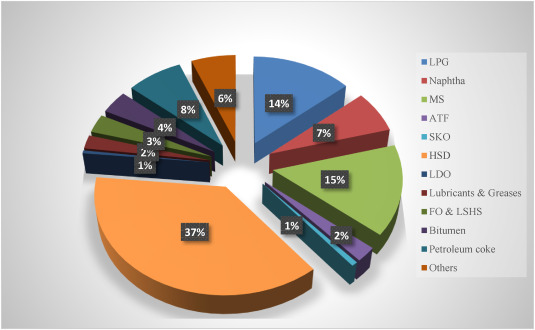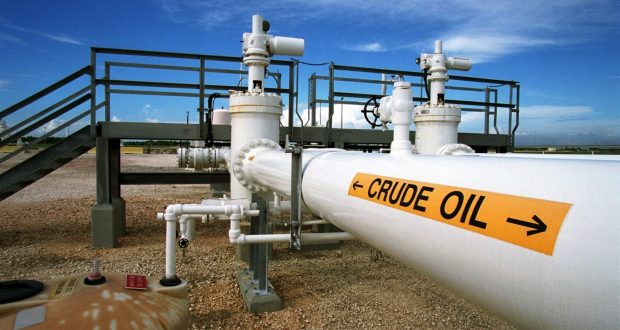Crude oil imports : A look at the success of government’s steps to reduce dependence on crudes imports 2025

Crude oil imports
Crude oil imports Because imports have increased more than exports, India’s trade deficit has grown recently. Even after all this time, we still rely on imports from other countries for a lot of things. The government has been working to make people self-sufficient, but the progress has been slow. Edible oils and pulses still need to be imported.
Bombay High increased production using British technology: Signs of a rise in American imports following Trump’s election (Crude oil imports)
Crude oil imports : In the case of crude oil, we are also largely dependent on imports. The government has taken a number of actions to boost domestic gas and crude oil production and lessen reliance on imports. Long ago, the government established the Production Sharing Contract to encourage the discovery of hydrocarbons.
The Discovered Small Field Policy was then created as well. In order to encourage the discovery of oil, even in small amounts, the government considered offering incentives. The Hydrocarbon Exploration and Licensing Policy was created by the government in 2016. In 2016–17, the Production Sharing Contract was extended. The government decided to investigate methane in coal beds. In 2020, the government made numerous changes to the way natural gas is marketed.

Crude oil imports : By lowering royalty rates, easing the revenue-sharing ratio, and opening up more offshore areas, the government has provided a number of incentives to promote exploration. The government also lowered the excise tax on gasoline and diesel in 2021–2022. At that time, the value added tax (VAT) rates had also been positively altered by the governments of several states.
The government has implemented a number of initiatives to encourage domestic oil and gas production and lessen reliance on imported crude oil, including (from source)
- (1) Early monetization of hydrocarbon discoveries under the Production Sharing Contract (PSC) regime, 2014
- (2) Small Field Policy Found, 2015.
- (3) Policy for the Exploration and Licensing of Hydrocarbons (HELP), 2016.
- (4) The 2016 and 2017 PSC Extension Policy.
- (5) Coal Bed Methane Early Monetization Policy, 2017.
- (6) National Data Repository Establishment, 2017
- (7) Evaluation of Un-assessed Sedimentary Basin Areas under the 2017 National Seismic Program.
- (8) Pre-New Exploration Licensing Policy (Pre-NELP) policy framework for PSC extension for Exploration Blocks and Discovered Fields, 2016 and 2017.
- (9) Policy to Encourage and Provide Rewards for Improved Oil and Gas Recovery Techniques, 2018.
- (10) Coal Bed Methane (CBM) Contracts, Nomination Fields, and Existing Production Sharing Contracts (PSCs): A Policy Framework for Exploration and Exploitation of Unconventional Hydrocarbons, 2018.
- (11) 2020’s Natural Gas Marketing Reforms.(Crude oil imports)
- (12) To entice bidders, Phase-I OALP Blocks under Category II and III basins will have reduced royalty rates, zero revenue share (until windfall gain), and no drilling commitment.
- (13) The release of roughly 1 million square kilometers (SKM) of offshore “No-Go” areas that had previously been off-limits to exploration for decades

Additionally, oil marketing companies had lowered their prices. The government had taken actions like expanding ethanol blending in addition to diversifying imports of crude oil. Apart from reducing car fares, the government also initiated a plan to offer LPG gas cylinders at reduced costs.(Crude oil imports) Green hydrogen is also supported by the government. However, the dependence on foreign imports of crude oil has persisted in spite of numerous actions. By 2027-28, experts estimate that Bombay High’s oil production will rise by 44% and its gas production by 89%. It is anticipated that the production increase will begin in April.
There have been hints recently that British Petroleum and the Oil and Natural Gas Corporation have signed technical service agreements to boost production at Bombay High. Only time will tell if the anticipated rise in production in this field materializes.
The production of gas in Bombay High is expected to rise from 70 to 71 billion cubic meters to 112 to 113 billion cubic meters, and the production of crude oil is expected to increase from 454 to 455 lakh tonnes to 654 to 655 lakh tonnes. At the moment, Bombay High Oil Field produces between 1 lakh 32 and 33 thousand barrels of crude oil per day. Additionally, every day, about 1.3 lakh cubic meters of gas are produced.Crude oil imports

Prior to the US’s arrival, crude oil was supposed to be imported from Russia; however, a tariff trade war broke out. India has changed its strategy to increase its imports of US crude oil. Sanctions against Russia are being threatened by the US.




